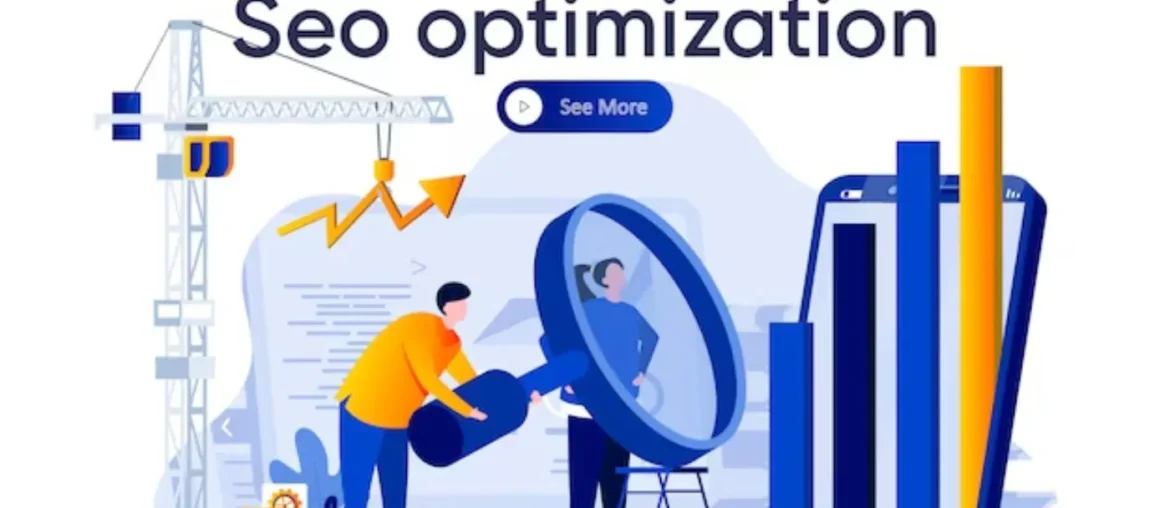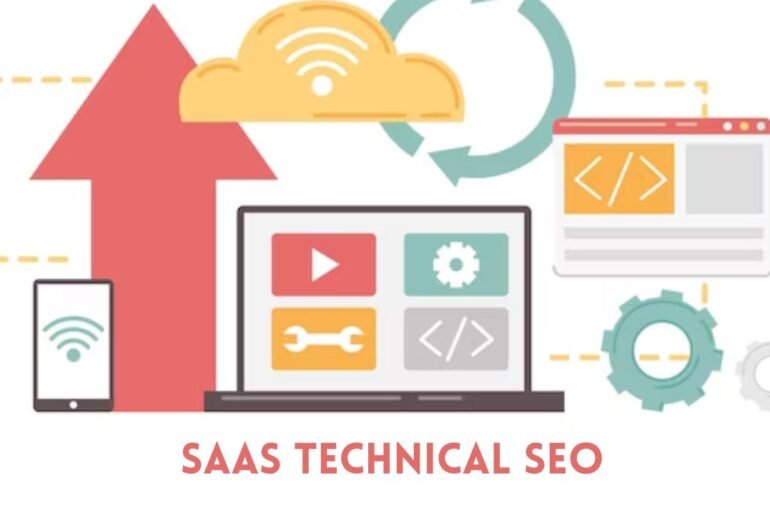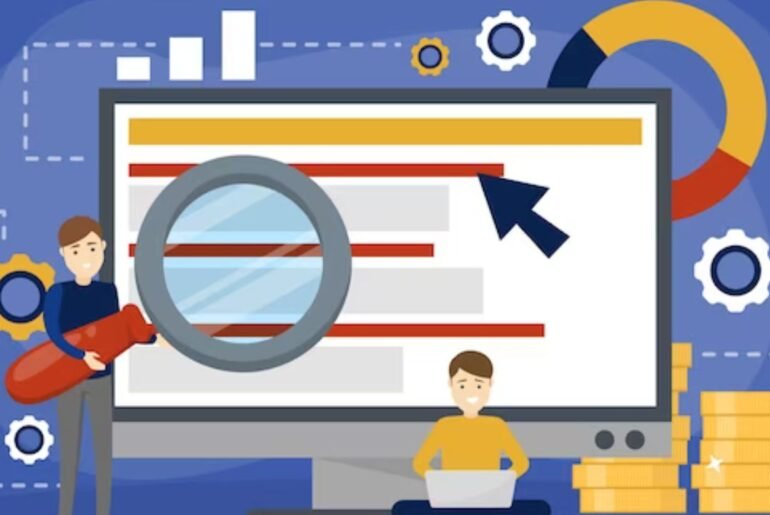The fact is that our website won’t reach our target audience if we don’t appear in Google’s top 10 results for our target keywords. These days, being successful in organic search necessitates using digital marketing strategies and optimizing a number of variables that search engines become crucial (technical SEO, on-page SEO, and off-page SEO). 75% of web visitors never scroll past the first page of search results. Being on the first page of Google is essential for this reason. Over the years, the emphasis has shifted to technical and off-page SEO tactics, but the truth is that if you disregard and don’t pay attention to your website’s on-page SEO, off-page SEO won’t produce the desired results.
In this article, we will discuss best practices of on-page SEO, its significance, what are the ranking elements we should focus on, and explain how to do on-page SEO to ensure that our website will target the correct audience and boost conversion rates.
What is On-Page SEO?
On-page SEO (also known as on-site SEO) is the practice of optimizing the website content and structure to improve your search engine rankings. On-page SEO factors include your title tags, meta descriptions, header tags, images, content, and internal linking structure. By optimizing our website for on-page SEO, we can make it easier for search engines to understand what our pages are about and why they should be ranked higher in search results. This can lead to more organic traffic to your website, which can boost your sales and leads
Best Practices of On Page SEO
If properly optimized, on-page SEO ranking criteria have a major effect on your page’s ability to rank well. The following are the most important on-page Factors that affect search engine rankings:
Title Tags
One of the most important factors for on page SEO is Title tags. They are the clickable headlines that appear in search results pages (SERPs), and they play a big role in whether or not people click on your website. Title tags should be unique, informative, and relevant to the content of your page.
There are some main tips for title tag optimization.
- Include your target keyword in the title tag. This will help search engines to understand what your page is about and rank it higher for relevant search queries.
- Make your title tag unique and informative. Avoid using generic titles like “Homepage” or “About Us.” Instead, write a title that accurately describes what your page is about and that will entice people to click on it.
- Keep your title tag under 60 characters. This will ensure that it doesn’t get cut off in SERPs.
- Test different title tags to see what performs best. You can use Google Search Console to track the click-through rate (CTR) for different title tags and see which ones are getting the most clicks.
Here are some examples of effective title tags:
- Target keyword: best Battery for Cars 2023
- Title tag: Best Battery for Cars 2023: Our Top 10 Picks
- Target keyword: how to make a website
- Title tag: How to Make a website: A Step-by-Step Guide
URLs
URL optimization is an important part of on-page SEO. It involves optimizing the structure and content of your URLs to make them more friendly to search engines and users.
Let’s discuss some tips for optimizing your URLs for on-page SEO:
- Use relevant keywords in your URLs. This will help search engines understand what your page is about and rank it higher for relevant search queries.
- Keep your URLs short and simple. Avoid using long, complex URLs with a lot of words.
- Use hyphens to separate words in your URLs. This will make them easier to read and understand.
- Use lowercase letters in your URLs. Search engines are not case-sensitive, but it is good practice to use lowercase letters
Some additional tips for URL optimization:
- Use canonical URLs to avoid duplicate content issues. If you have multiple pages with the same content, use a canonical URL to tell search engines which page is the preferred version.
- Use redirects to forward users to the correct page. If you change the URL of a page, make sure to use a redirect to forward users to the new URL. This will help to avoid broken links(unmatched urls with pages) and ensure that users can still find your content.
- Monitor your URLs for errors and redirects. You can use a tool like Google Search Console to monitor your URLs for errors and redirects. This will help you to identify and fix any problems that could be impacting your search engine rankings.
By following these tips, you can optimize your URLs for on-page SEO and improve your search engine rankings.
Here are some examples of optimized URLs:
- /best-battery-for-cars-2023/
- /how-to-make-a-website/
- /iphone-14-release-date/
Header Tags
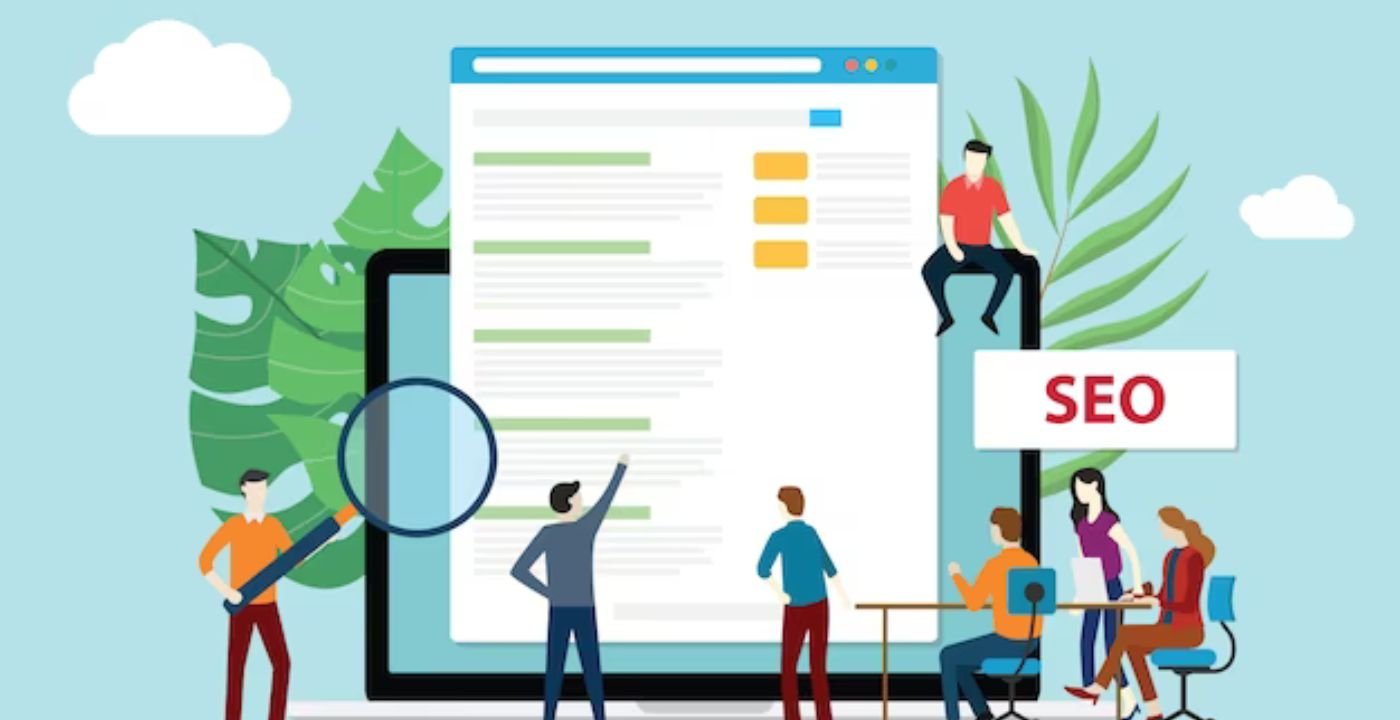
Header tags are the important on-page SEO factor. They are used to structure your content and make it easier for search engines to understand what your page is about. They are also used to display headings and subheadings on your page.
Here are some tips for using header tags effectively in on-page SEO:
- Use the correct hierarchy. Header tags are ranked in order of importance, from H1 to H6. The H1 tag is the most important header tag, and the H6 tag is the least important. Use your H1 tag for the main topic of your page, and use your H2 and H3 tags to indicate the subtopics that you are covering.
- Use relevant keywords. Include your target keyword in your H1 tag, and use relevant keywords in your H2 and H3 tags. This will help search engines to understand what your page is about and rank it higher for relevant search queries.
- Keep your header tags concise and descriptive. Your header tags should be clear and concise, and they should accurately shows the content of your page. Avoid using generic header tags like “Introduction” or “Conclusion.”
Here are some of the benefits of using header tags in on-page SEO:
- Improved search engine rankings: Search engines use header tags to understand the structure and content of your page. By using relevant keywords in your header tags, you can help search engines to rank your page higher for relevant search queries.
- Improved user experience: Header tags make your content easier to read and scan. Users can quickly see what your page is about and what topics you are covering. This can help to improve your click-through rate (CTR) and reduce your bounce rate.
- Increased accessibility: Header tags can help to make your content more accessible to people with disabilities. For example, screen readers can use header tags to help visually impaired users navigate your page.
Here is an example of how to use header tags effectively in on-page SEO:
Target keyword: best Battery for Cars 2023
H1 tag: Best Battery for Cars 2023
H2 tag: What to look for in a Battery for cars
H2 tag: Top 10 Battery for Cars in 2023
H3 tag: Osaka
Meta Description
Meta description is a brief summary of a web page that appears in search engine results pages (SERPs) below the title tag. It is an important part of on-page SEO because it can help to improve your click-through rate (CTR) and attract more visitors to your website.
Let’s have a look on some tips for writing effective meta descriptions for on-page SEO:
- Make your meta description unique and informative. Avoid using generic meta descriptions like “Click here to learn more.” Instead, write a meta description that accurately reflects the content of your page and that is likely to entice people to click on your link.
- Include your target keyword in the meta description. This will help search engines to understand what your page is about and rank it higher for relevant search queries.
- Keep your meta description under 160 characters. This is the maximum length that search engines will display in SERPs.
- Use a call to action. Let customers know what you want them to do by using phrases like “Visit our website to learn more” or “Sign up for our subscription.”
Example of an effective meta description:
Target keyword: best hosting for websites 2023
Meta description: Looking for the best hosting for websites in 2023? Check out our list of the top 10 hosting for websites, based on price, performance, and features.
This meta description is unique, informative, and includes the target keyword. It is also under 160 characters and has a call to action.
Keyword Frequency
Keyword frequency is the number of times a specific keyword appears on a web page. It is one of the factors that search engines use to rank web pages for relevant search queries.
It is also important to avoid keyword stuffing, which is the practice of using keywords too often in your content. Keyword stuffing can stop your rankings, so it is important to use keywords naturally and focus on writing high-quality content that is informative and engaging.
Here are some tips for using keyword frequency effectively:
• Use your target keyword in the title tag, meta description, and header tags. This will help search engines to understand what your page is about and rank it higher for relevant search queries.
• Use your target keyword throughout your content, but avoid keyword stuffing. Focus to use your target keyword naturally throughout your content, and focus on writing high-quality content that is informative and engaging.
• Use a variety of related keywords. This will help you to reach a wider audience and improve your chances of ranking for relevant search queries.
A good general rule of thumb is to use your target keyword once per 100-200 words of content. This is enough to help search engines understand what your page is about, but it is not so much that it looks like you are keyword stuffing.
You can also use a keyword density checker tool to help you to determine the ideal keyword frequency for your page. These tools can help you to see how many times your target keyword appears on your page, and they can also suggest other related keywords that you can use to improve your content. This is also in the best practices of On page SEO
Page Content (Best Practice of On Page SEO)
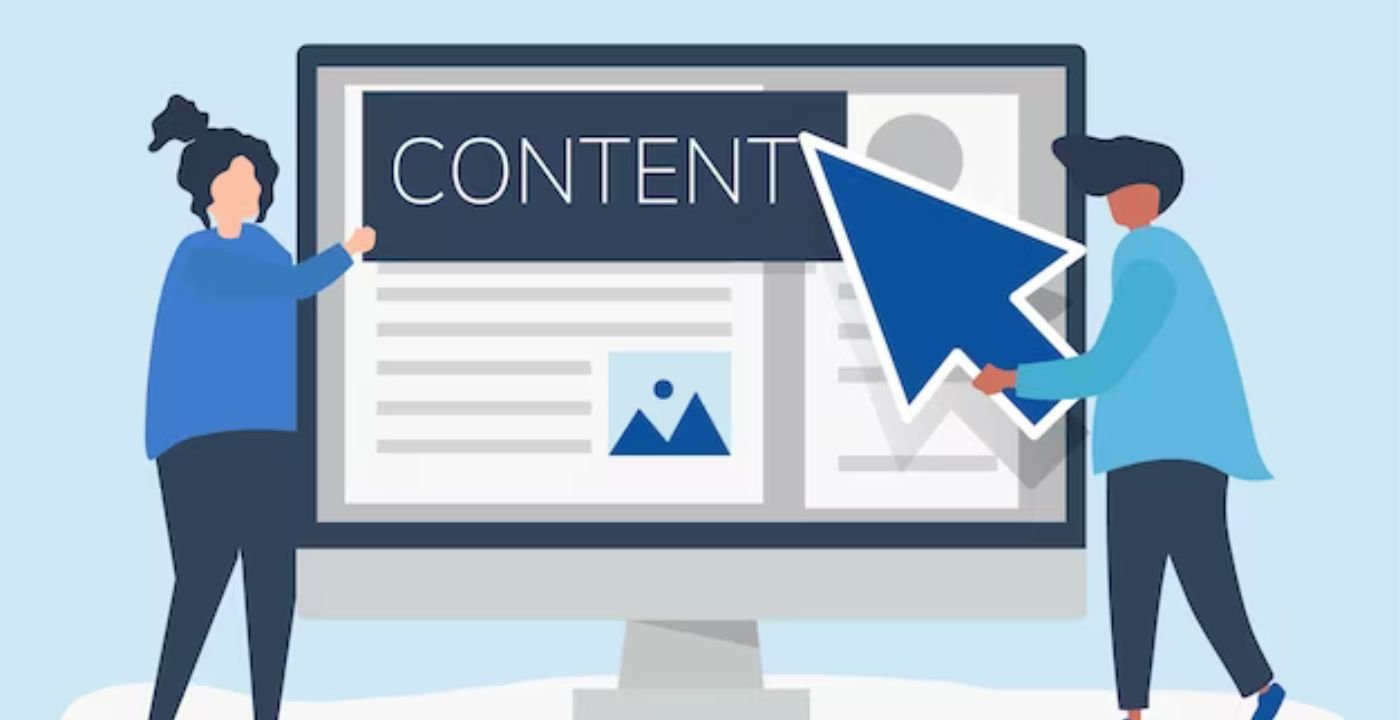
Page content is the most important practice on-page SEO. It is the text and other media that appear on your web page, and it is what search engines use to understand what your page is about and how relevant it is to search queries.
To optimize your page content for on-page SEO, you should:
- Write high-quality content that is informative and engaging. Your content should be well-written, well-organized, and relevant to your target audience.
- Use your target keyword throughout your content, but avoid keyword stuffing. Aim to use your target keyword naturally throughout your content, and focus on writing high-quality content that is informative and engaging.
- Use related keywords and synonyms. This will help you to reach a wider audience and improve your chances of ranking for relevant search queries.
- Header tags help search engines to understand the structure and content of your page.
- Use images and videos. Images and videos can make your content more engaging and visually appealing.
- Optimize your images and videos for SEO. Give each image and video a descriptive file name and alt text. This will help search engines to understand what the image or video is about and how it relates to your content.
- • Ensure that your content is different and original. Don’t copy material from other websites.
- Write for your target audience.
- Write with the clarity and conciseness.
- Verify that there are no grammatical or spelling mistakes.
Internal Linking
Internal linking is the practice of linking to other pages on your own website. It is an important part of on-page SEO because it helps search engines to understand the structure of your website and the relationships between your pages. Internal linking can also help to improve your user experience by making it easy for visitors to navigate your website and find the information they are looking for.
Have a look on some tips for using internal linking effectively in on-page SEO:
- Link to relevant pages. When you link to another page on your website, make sure that the page is relevant to the content of the page you are linking from. This will help search engines to understand the relationships between your pages and rank them accordingly.
- Use descriptive anchor text. The anchor text is the text that is displayed for the link. Make sure that the anchor text is descriptive and accurately match with the content of the page you are linking to. This will help search engines to understand what the page is about and rank it higher for relevant search queries.
- Link to important pages. Make sure to link to your most important pages, such as your homepage, product pages, and category pages. This will help search engines to understand the structure of your website and rank your important pages higher in SERPs.
- Use a variety of link types. There are different types of links that you can use, such as contextual links, image links, and navigational links. Use a variety of link types to make your internal linking more natural and effective.
Let’s have a look for an example like if you we are writing content on SEO basics then if other pages of my websites with same words /anchor text or related pages then i will put links on it like wise here we discuss some basic SEO steps for beginners
Image Alt Text
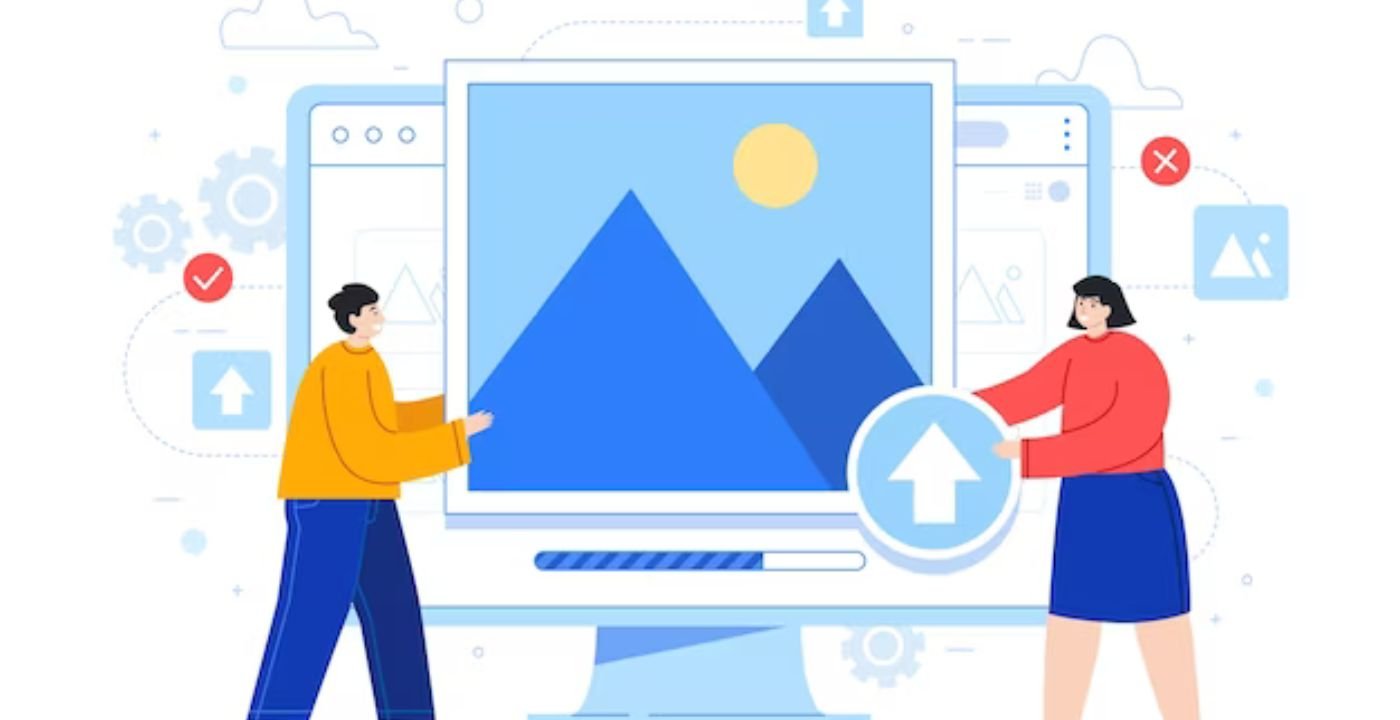
Image alt text is the text that is displayed in place of an image if it cannot be loaded or is not displayed. It is also used by screen readers to describe images to visually impaired users. Alt text is important for on-page SEO because it helps search engines to understand what your images are about and how they relate to the content of your page. Additionally, it helps in making your website more user-friendly.
To write effective alt text for on-page SEO, you should:
- Be specific and expressive. What is happening in the image should be appropriately described in the alt text.
- Include relevant keywords. The alt text should contain your goal term, but avoid from stuffing it.
- Be concise and to the point. Less than 120 characters should make up the alt text.
Here is an example of effective alt text for on-page SEO:
Image: website formation
Alt text: login form for website
This alt text is descriptive and specific, and it includes the target keyword “website.” It is also under 120 characters.
Some additional tips for writing effective alt text:
- Avoid using general alt text like “image” or “picture.”
- Avoid using alt text to describe the design of the image, such as “a blue button with the text ‘Submit’ on it.” Instead, describe what the button does, such as “submit the form.”
- Be consistent with your alt text format. Use the same format for all of the alt text on your website.
- Proofread your alt text carefully. Make sure there are no errors in grammar or spelling.
By following these tips, you can write effective alt text that will help you to improve your search engine rankings and accessibility.
Structured Data
Structured data, also known as schema markup, is a way to organize your website’s data in a way that is easily understood by search engines. It helps search engines to better understand the content and context of your pages, which can lead to richer snippets and better rankings in search results pages (SERPs).
There are many different types of structured data, but some of the most common types include:
- Product data: This type of structured data provides information about products, such as their name, price, description, and availability.
- Event data: This type of structured data provides information about events, such as their name, date, location, and ticket prices.
- Recipe data: This type of structured data provides information about recipes, such as the ingredients, cooking instructions, and nutritional value.
- Article data: This type of structured data provides information about articles, such as the author, publication date, and main topic.
To add structured data to your website, you can use a variety of different methods. There are also a number of plugins and tools available to make it easier to add structured data to your website.
Here are some of the benefits of using structured data in on-page SEO:
- Richer snippets in SERPs: Search engines can use structured data to display richer snippets in SERPs, such as product reviews, event dates, and recipe ratings. This can make your listings more attractive and informative to potential visitors, and can lead to more clicks.
- Improved search rankings: Structured data can help search engines to better understand the content and context of your pages, which can lead to improved search rankings.
- Increased traffic and conversions: By using structured data to improve your search rankings and create more informative and engaging listings in SERPs, you can attract more visitors to your website and increase your chances of conversions.
If you are not already using structured data on your website, I encourage you to consider doing so. It is a relatively simple and straightforward process, and it can have a significant impact on your website’s SEO and performance
Best Practices of On Page SEO
- Use relevant keywords throughout your content. This includes your title tag, meta description, header tags, and body text.
- Write high-quality content that is informative and engaging. Your content should be well-written, well-organized, and relevant to your target audience.
- Structure your content using header tags. This helps search engines to understand the structure and content of your page.
- Optimize your images and videos for SEO. Give each image and video a descriptive file name and alt text.
- Use internal linking to connect your pages together. This helps search engines to crawl and index your website more easily.
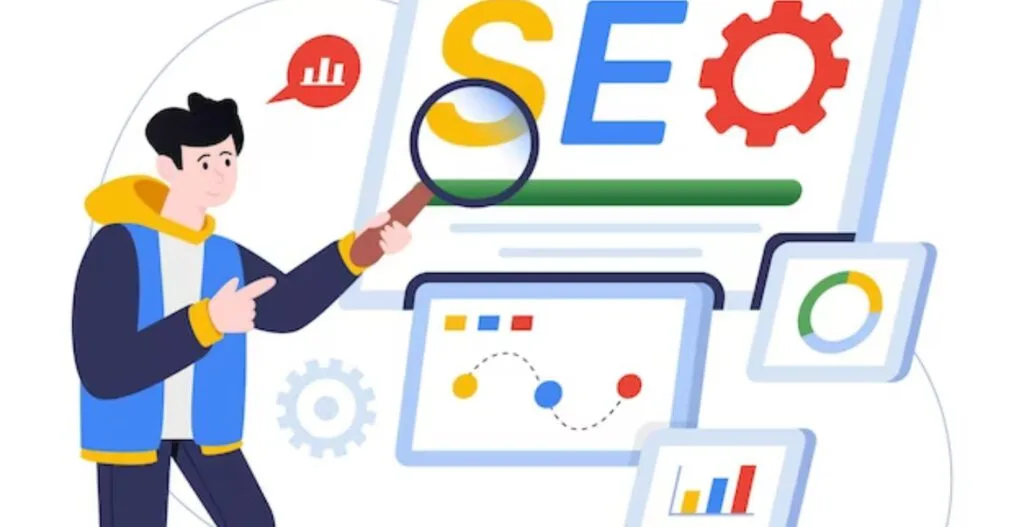
Your Finals Thoughts
Finally, Best practices of on page SEO are a critical component of improving a website’s visibility and user experience. Websites can increase search engine rankings by carefully selecting and combining important keywords, developing high-quality, user-friendly content, optimizing meta tags, and using suitable header tags. These methods not only increase organic traffic but also give valuable content that corresponds with user intent, resulting in SEO success.


